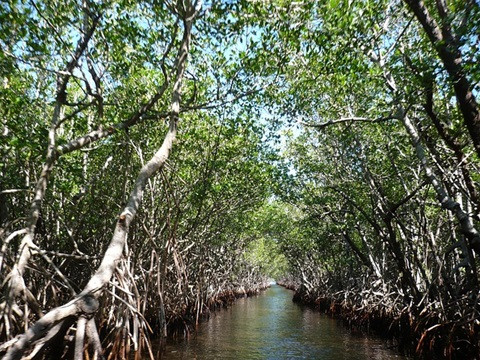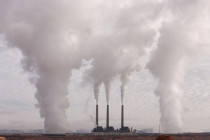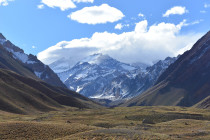 WeatherSunshine.com - Articles - Mangrove forests in the Maldives are under threat
WeatherSunshine.com - Articles - Mangrove forests in the Maldives are under threat
Mangrove forests in the Maldives are under threat
11/21/24
Scientists have found evidence that the mangrove forests of the Maldives which protect the subtropical coast are drowning. The finding suggests that rising sea levels and a climate phenomenon known as the Indian Ocean Dipole have caused some Maldivian islands to lose more than half of their mangroves by 2020.

Photo:Pixabay
The research team led by Northumbria University warns that the new findings will have implications not only for the Maldives but also for other island nations and coastal ecosystems around the planet. In 2020, a gradual deterioration of mangrove forests was recorded on a quarter of the Maldivian islands. The situation subsequently resulted in the death of a large number of trees.
The extent of the damage was most revealed by satellite images of uninhabited islands. On some islands, more than half of the mangrove cover has been lost. Mangroves play a vital role in protecting coastal areas from storms, erosion and flooding. Their function is a natural barrier. At the same time, they are nurseries for a whole range of marine species which also provide food for coastal communities.
The team of researchers combined evidence from sea level climate data and remote sensing with field observations of sediment geochemistry and dendrology. Analysis of mangrove wood revealed that dead trees showed greater signs of salinity stress compared to living trees. The stress suggests that the tree's roots were trying to cope with the increased salt levels which was a key factor in their eventual death.
Sea levels around the Maldives were found to be rising at an accelerated rate of more than 30 millimeters per year between 2017 and 2020. Towards the end of the period an intense Indian Ocean dipole phenomenon occurred.
Mangroves naturally produce their own sediment allowing them to adapt to gradually rising seas. The rate at which the water level has been rising in recent years is too fast for the mangrove forests to cope with.
As the planet continues to warm the dipole can be expected to occur more frequently and in larger sizes. The researchers noted that evidence of mangrove die-offs in other areas of the Indian Ocean has also been published.
Other articles

Photo gallery of underwater life
Fourteen photos of underwater life that you can use as background wallpaper. more

The Great Barrier Reef is currently experiencing the highest level of coral mortality in recent years. Extremely hot... more

Researchers recently analyzed the Lafayette meteorite and found that it was once exposed to liquid water during its... more

Microplastics affecting cloud formation
Microplastics have already been found in all the most primitive environments on Earth. From the depths of the Mariana... more

Photo gallery of natural landscapes
Fourteen photos of natural landscapes that you can use as your desktop background. more

The Philippines has been hit by five powerful storms in the past month alone causing massive damage. It's further... more

The European Commissioner for Climate and Clean Economy, despite the great pressure from car companies and... more

The Lewotobi Laki Laki volcano erupted on the island of Flores in eastern Indonesia. Farmers who cultivate the... more

The five largest deserts in the world
In the following article we will introduce the five largest deserts in the world. Many people imagine deserts as... more

Photo gallery of mountains
Fourteen themed photos that you can use as your desktop background. more














